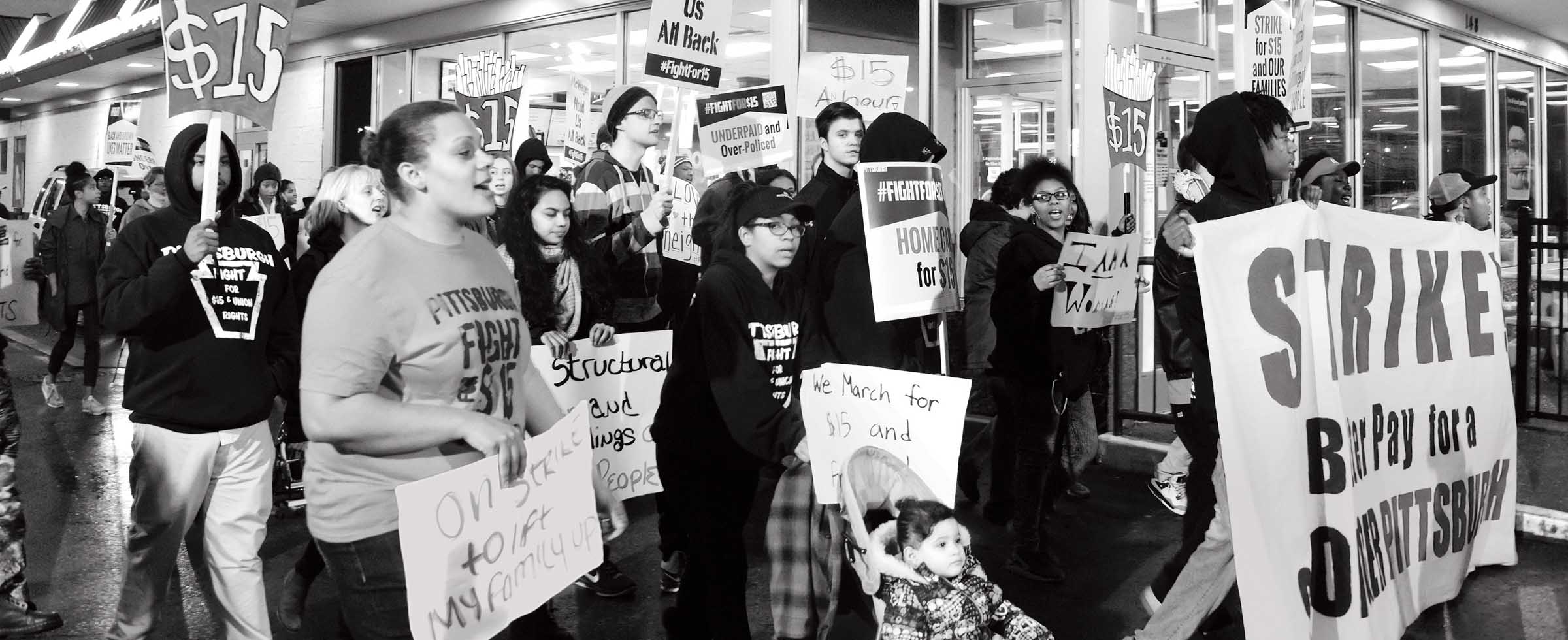Making Everyone Count

CAMPAIGNS TO SPUR SOUTHWESTERN PENNSYLVANIANS to complete the decennial census were in high gear. Nonprofit workers and volunteers fanned out into communities, urging residents to file online and showed them how. Census hubs in libraries and other public places were attracting those without computers or an internet connection to fill out the survey. Public events were staged to reach others. March was rolling along, and then COVID-19 forced the campaigners to slam on the brakes.
In the blink of an eye, face-to-face contact was gone, robbing complete-count campaigns of their most effective means of reaching, teaching and encouraging residents to fill out the census. And connecting to seniors, immigrants, people of color and other hard-to-count populations became even harder.
Some community service nonprofits that had added census campaigns to their workload this year were staggered. Not only did they have to shift to new strategies on the fly, they had to do so while strained to capacity trying to meet the soaring demand for food, housing and other basic needs in their service areas.
“With so many folks struggling with the pandemic, we’ve lost momentum on the census,” says Phil Koch, executive director of The Community Foundation of Westmoreland County, which is supporting mini-grants in seven counties beyond Allegheny.
The stakes are high. Pennsylvania Census officials estimate that every family of five that does not complete the census will translate to a loss of $100,000 in federal funding over the next decade to spend on everything from transportation to safety net essentials, such as food, housing, education and health care.
Now complete-count campaigns are facing a second blow from a U.S. Census Bureau decision to cut its operations by one precious month — from end of October to end of September. Citing the risk of COVID-19 for those doing home visits, Bureau officials made the decision to cut the time frame in several areas. That decision has been met with a firestorm of criticism, including protest statements from 500 funding institutions across the country (The Pittsburgh Foundation is a signer) — and another from more than 900 community stakeholder organizations.
Despite charges that the cutbacks are designed to benefit the Republican Party, organizers say there is evidence that the process can be successful if allowed to continue.
One bright spot is that, considering the coronavirus turmoil, the percentages of residents who’ve already completed the census isn’t as low as officials had feared.
By the third week of August, five counties had better completion rates than the 66.9% statewide average, according to 2020census.gov. Nearly 75% of Butler County residents
had filled out the census. In Westmoreland, it reached 71.5%, as the county closed in on its final 2010 self-response rate of 71.6%. Nationwide, 64% of Americans had completed the census online or over the phone.
To educate and activate seven counties outside of Allegheny, The Community Foundation of Westmoreland County implemented a mini-grants program. Nonprofit organizations, schools and municipalities applied for grants of up to $1,000 to cover the expenses of census activities. For example, libraries or community centers might set up an iPad station where families can register for the census when they visit the facility. The pandemic presented an opportunity for organizations to re-think how they might use their mini-grants, since social distancing made original outreach plans nearly impossible.
“Our nonprofit organizations are putting in double time to connect with vulnerable populations that are also the most difficult to count,” says Koch. “That’s an opportunity.
When they connect with people to make sure they’re okay, they can talk to them about the importance of the census and how to complete it.”
Teachers with Westmoreland Community Action’s Head Start program are talking up the census when speaking with students’ parents. The nonprofit includes census information with the groceries that residents flooding its food pantry receive. Before the outbreak, it had done most of its census work in the public schools, which included age-appropriate classroom lessons.
“The idea is that if you help sell the census to kids, they’ll go home and talk about it with their parents,” says Mandy Zurlich, the nonprofit’s chief executive officer. “We knew we had to engage our hard-to-count individuals in multiple ways.”
In Allegheny County, 69.4% of residents had completed the census by mid-August, the result of dozens of nonprofits and other community stakeholders organizing to
raise the count. The diverse communities the foundation serves in the Monongahela River valley and elsewhere have a significant number of hard-to-count residents, including the county’s largest population of immigrants and refugees. With a collaborative of stakeholders, foundation staff developed a census strategy ranging from mini grants to expert training in promoting a complete count.
Like others, the outbreak forced Jefferson Counts, a campaign led by Jefferson Regional Foundation, the Jefferson Community Collaborative, and other Jefferson area partners, to adopt non-contact tactics, such as adding census messages to the agenda of a well-attended virtual town meeting in Duquesne about crisis resources for families. But the pandemic also offers a real-time lesson about the importance of the census that the campaign can exploit, says Mary Phan-Gruber, CEO of the Jefferson Regional Foundation. “COVID-19 only points out how decisions about emergency or disaster assistance are based on census allocation. When a vaccine is available, someone will be looking at census numbers to determine how and when the vaccine is distributed.”
Original story appeared in the Forum Quarterly Summer 2020.



